Amanda was asked which 3 bath bomb colorants we would recommend if someone was just starting out. This was a great question and I knew right away what I would recommend.
First off you have to decide if you want to color your bath bombs with Lakes or Dyes. If you’re brand new to the bath fizzy world, then I think Lakes tend to be so much easier than Dyes, and even now, I predominantly reach for my Lakes when it’s time to color my bath bombs.
The reason for that is simple. Lakes are almost foolproof and have a relatively small learning curve. They won’t fade as quickly when exposed to light as compared to Dyes, which means you’ll be satisfied with your product longer. They are cost effective, and easy to find.
Lakes and Dyes are both created with the same color pigments. However, where Dyes are nearly pure, water-soluble color, Lakes are Dyes that have been suspended in a carrier of aluminum salt and are generally oil soluble. Both can be FD&C batch certified, or not, which will reflect in their pricing. Additionally, Lakes can have varying dye loads that will affect the color payout. While many people will report that Lakes won’t color your water, they can when they are from a quality supplier! In my experience Lakes might not color the foam as vibrantly as Dyes, but they can still provide great color payout in the water. For my money, Lakes are the perfect place to start!
Dyes + Blooming
Dyes are water soluble and don’t need any special ingredient to disperse in your bath water. However, they generally need to be bloomed or pre-hydrated to look their best in a bath bomb.
Blooming involves adding the powdered Dye to your baking soda and wetting it to open up the color, then using a mixer to disperse the color evenly. Another way of blooming involves wetting the granular dye first, then adding a few drops to your baking soda and mixing in. The baking soda then needs to be allowed to dry before being used to make a batch of bath bombs.
If you don’t bloom your dyes the colors will appear soft and pastel, which is fine if that’s what you’re going for, but it can be hard to tell how much color payout will actually be in your water. Additionally, many makers want those beautiful, eye catching pops of color in their bath bombs.
There are a few downsides with Dyes for beginners though. The cost can be quite high and the learning curve quite steep. If you’re already using Lakes to make bath bombs and are interested in switching to Dyes, don’t do it in October when you need to be on point for holiday sales! That’s a road of misery you don’t want to travel. Instead, make the transition in the spring when sales tend to be slower and you have time to figure out all the pitfalls.
The frustrations with Dyes come from their tendency to morph when in contact with Isopropyl Alcohol–commonly used as a binder, their need to be added carefully to prevent spotting, and the tiny amount needed (we’re talking microscoops!) is so small that it’s easy to be heavy-handed! They are also counter intuitive when it comes to color mixing. Red 40, when dry, looks brown. Green blends look Red. Once they are hydrated this changes, but it can be quite confusing if you’re just learning how to mix colors!
Lakes + Polysorbate 80
Lakes, on the other hand, are oil soluble and need an emulsifying agent Like Polysorbate 80 to disperse them in the water. I don’t find this to be an issue or drawback because I use Polysorbate 80 as a standard ingredient in my recipe anyway. Polysorbate is used to help the fats and water in ice cream (and other foods, but let’s all say yum as we think about ice cream!) emulsify so you get that delicious creamy texture. In your bath bombs it will help your oils fully blend into your water and not stay suspended on top. This means that the person using your bath bomb will have more oils in contact with their skin as they bathe, and will likely love how soft thier skin feels. They will also appreciate not needing to wipe their tub of slippery oils when they are done bathing.
You can incorporate Polysorbate 80 as a part of your basic recipe the way I do, which means if you want to use Lakes or Dyes you’re already covered and don’t need to change your recipe on the fly! A general rule of thumb for Polysorbate usage is to use half the amount of oil. In my recipe I use 60g of oils/butters and 30g of Poly 80!
Using Lakes
You might find out you love Lakes, like I did! With Lakes I tend to add my color to the dry phase of my making process because it’s easier to blend the color in with all the dry ingredients. I have added color all the way to the last minute though. Sometimes before molding I change my mind and want more vibrant colors or a slightly different shade!
With lakes, this is so easy to do! Because Lakes are suspended in salt substrates and have more body than Dyes, I make sure to sift them by pushing them through a fine sieve into my mix. This helps prevent spots of unincorporated color. Other than that, Lakes are quite forgiving! With the exception of Red 27 It’s hard to use too much, and what you see is what you get!
They don’t morph or change, and while all colorants will eventually fade, my bath bombs rock out in full sun markets every weekend and come back home bright, happy, and basically unphased! Even though I do use dyes for my embeds, Lakes are my favorite go-to colorant!
My Top 3 Lakes
The three colors I would suggest to any maker looking to start their Lake color collection would be Blue 1, Red 27, and Yellow 5.
Here’s why.
With those colors you automatically get Blue,Yellow, and Pink.
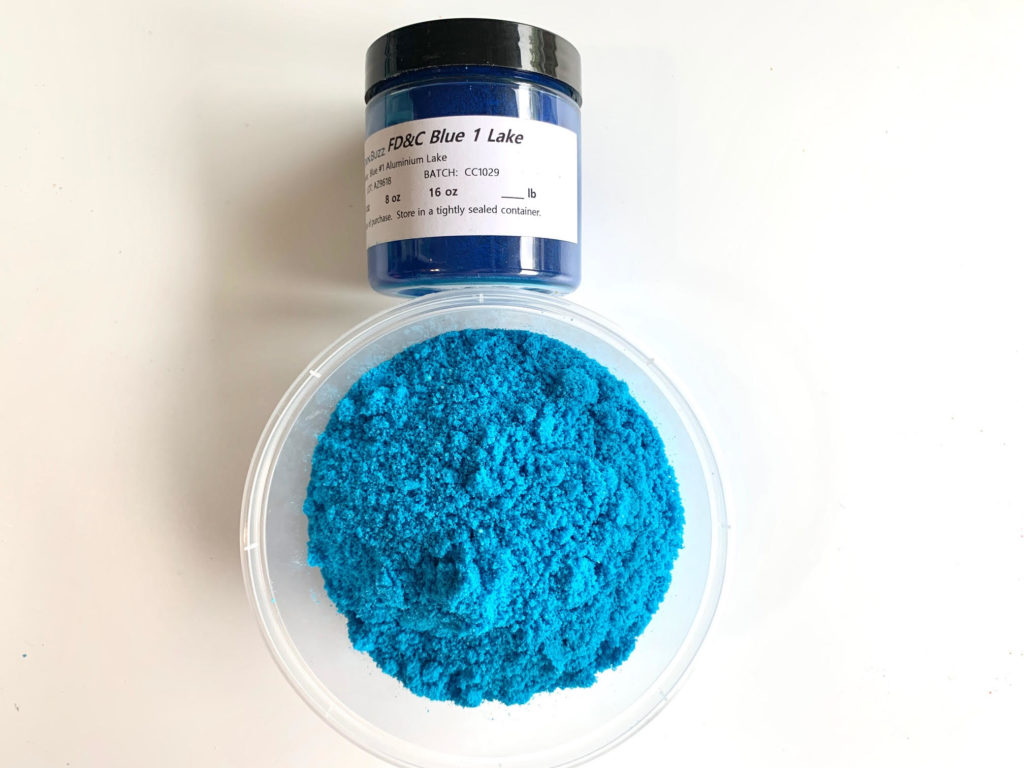
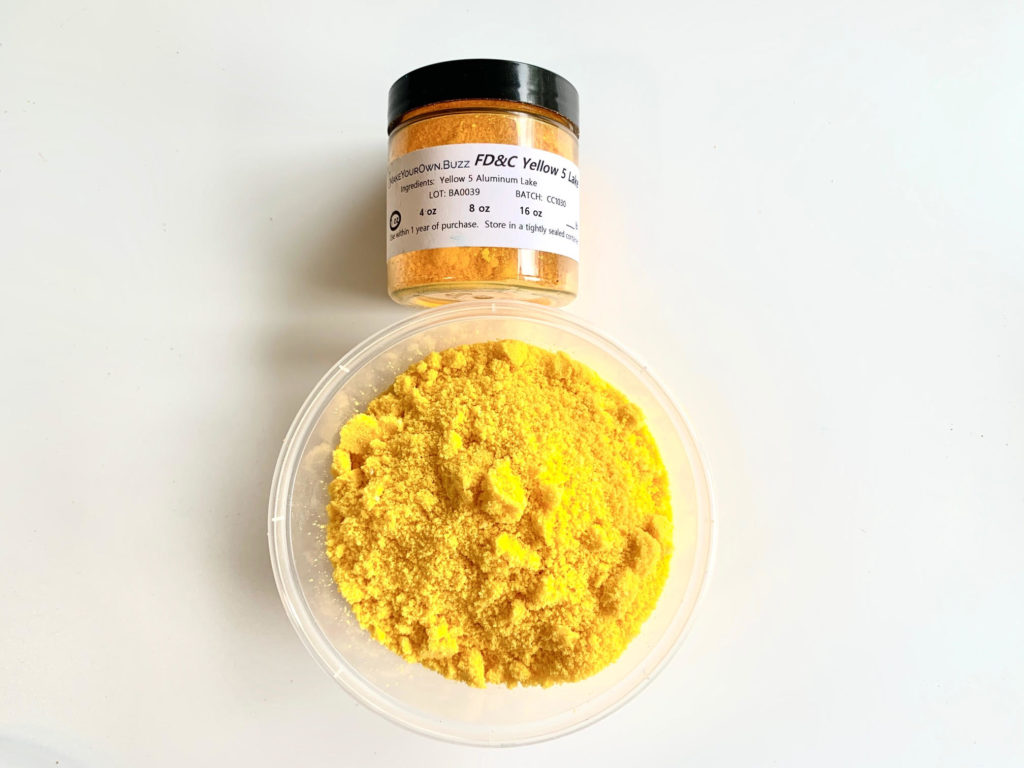
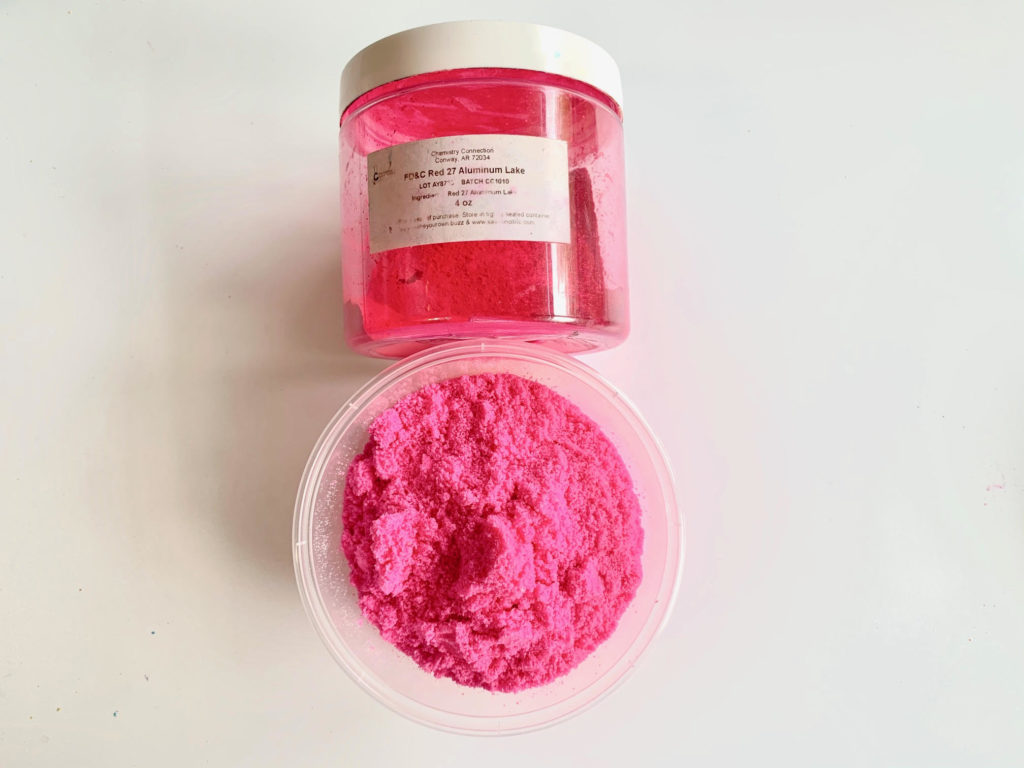
And by mixing, you’ll also be able to make Red, Green, Purple, and Orange. Here’s how!
1 part Blue1 to 1 part Yellow 5 you’ll get Green! (Learn more about custom mixing green.)
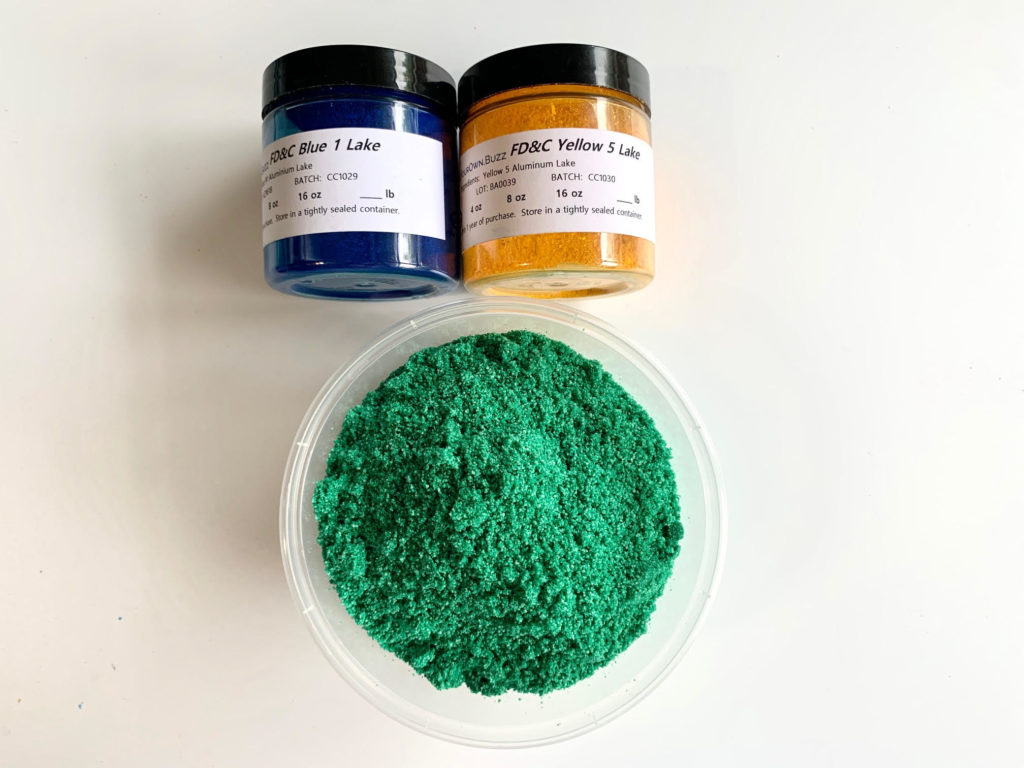
1 part Red 27 to 1 part Yellow 5 you’ll get Red!
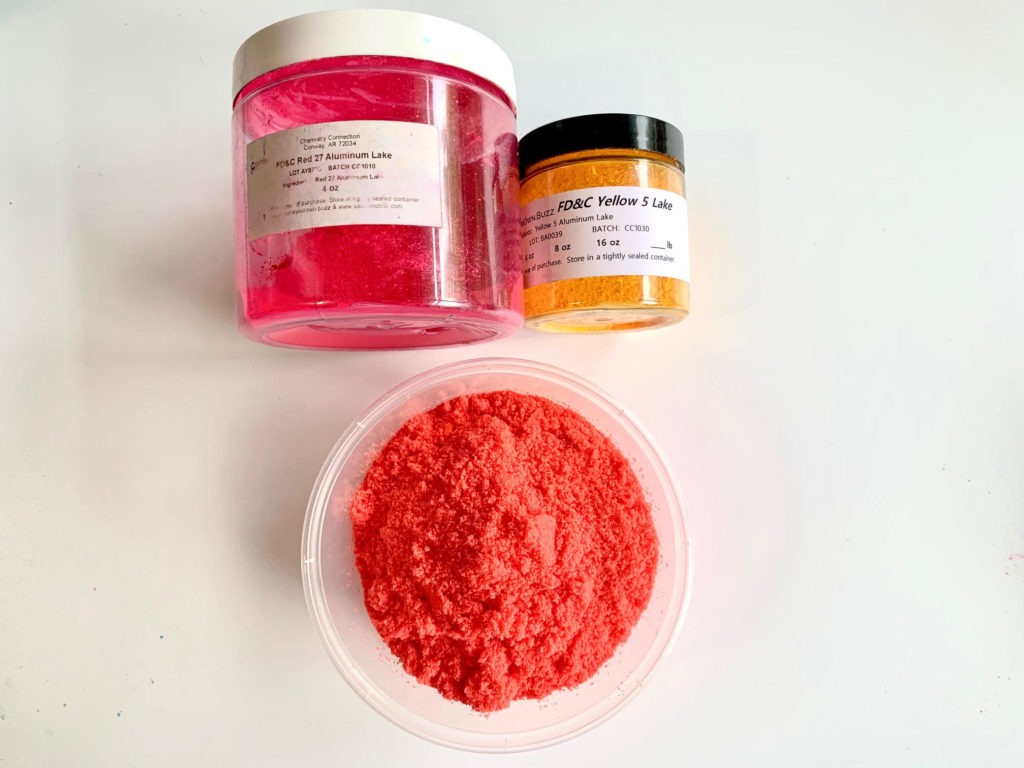
2 part Red 27 to 1 part Blue 1 you’ll get Purple! (Learn more about custom mixing purple.)
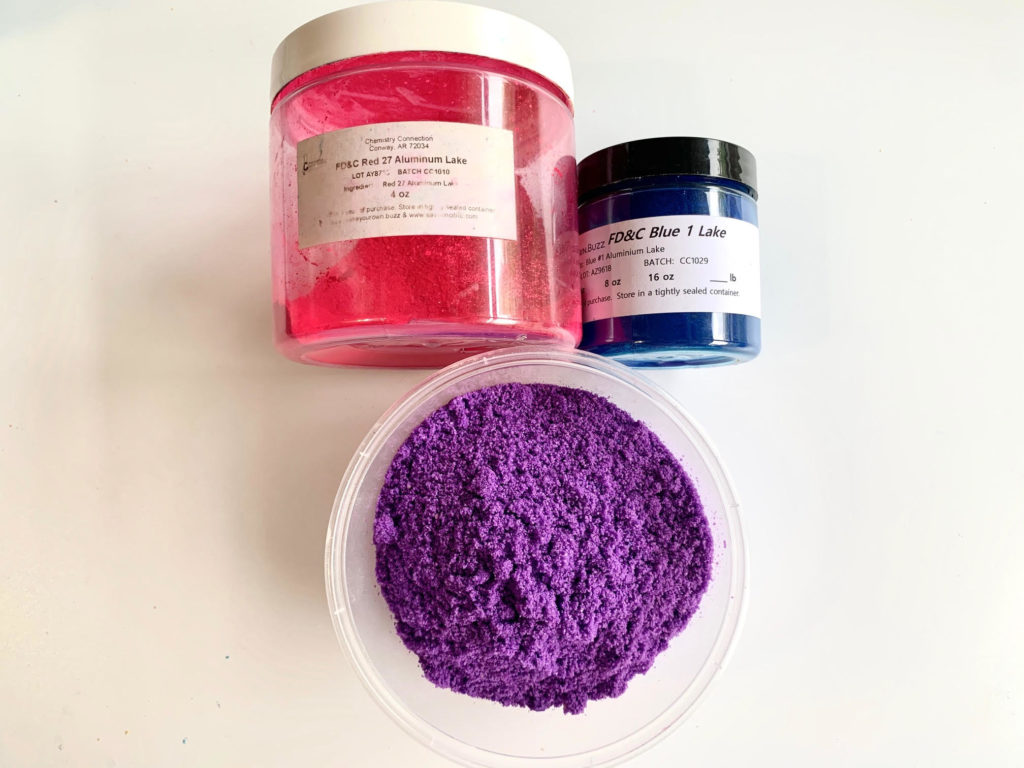
2 part Yellow 5 to 1 part Red 27 you’ll get Orange!
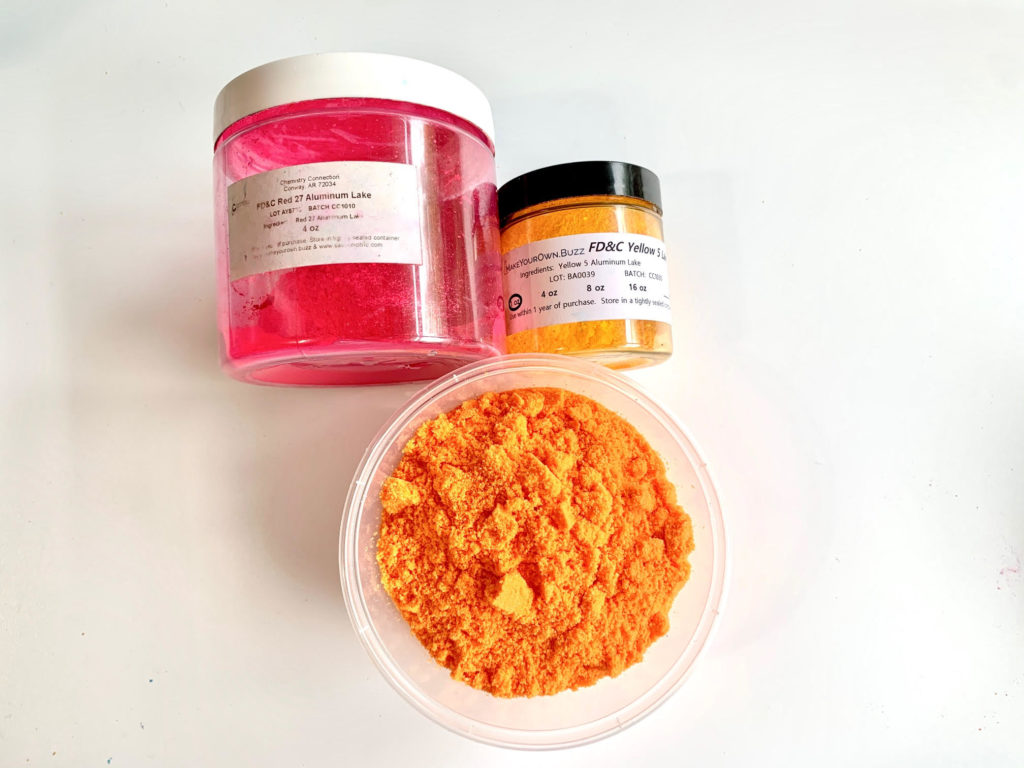
You can find even more range within those colors by playing with the ratios further. If you wanted a bright acid green you could mix 4 Parts Yellow 5 to 1 part Blue 1. If you wanted a more Berry-type purple tone you could mix 3 parts Red 27 to 1 Part Blue 1. And so on! There are so many possibilities, and such a wide array of colors you can mix with these 3 basic Lakes!
How would you interpret the part to part system for your bath bombs? My batch size makes 12-15 full sized bath bombs depending on the mold, and I use anywhere from 1-2 teaspoons of Lake colorants. If you’re just starting out, your batch might only make 5-6 full sized bath bombs in which case you may only need ⅛-½ teaspoon to color them.
You will have to play with the amounts you need to use based on your batch size. Always make sure to test any new color combos for staining! You can use quite a bit more Yellow 5 than Red 27 because Red 27 has a tendency to stain, even when you use Polysorbate 80. Testing is so important! Also keep in mind that not all Lakes will have the same Dye Load, so it’s a great idea to write down how much colorant you used, your supplier, batch number, etc. for future reference!
Here’s a great post on Mad Micas about the difference between Lakes and Dyes
https://www.madmicas.com/blogs/news/what-are-fd-c-dyes-and-lakes-and-how-do-they-differ
Suppliers we use and trust for Lakes and Dyes include:
- Nurture Soap Supplies
- MakeYourOwn.Buzz
- Mad Micas
- Muddy Soap Co
And just for fun! Check out these colors in the water!
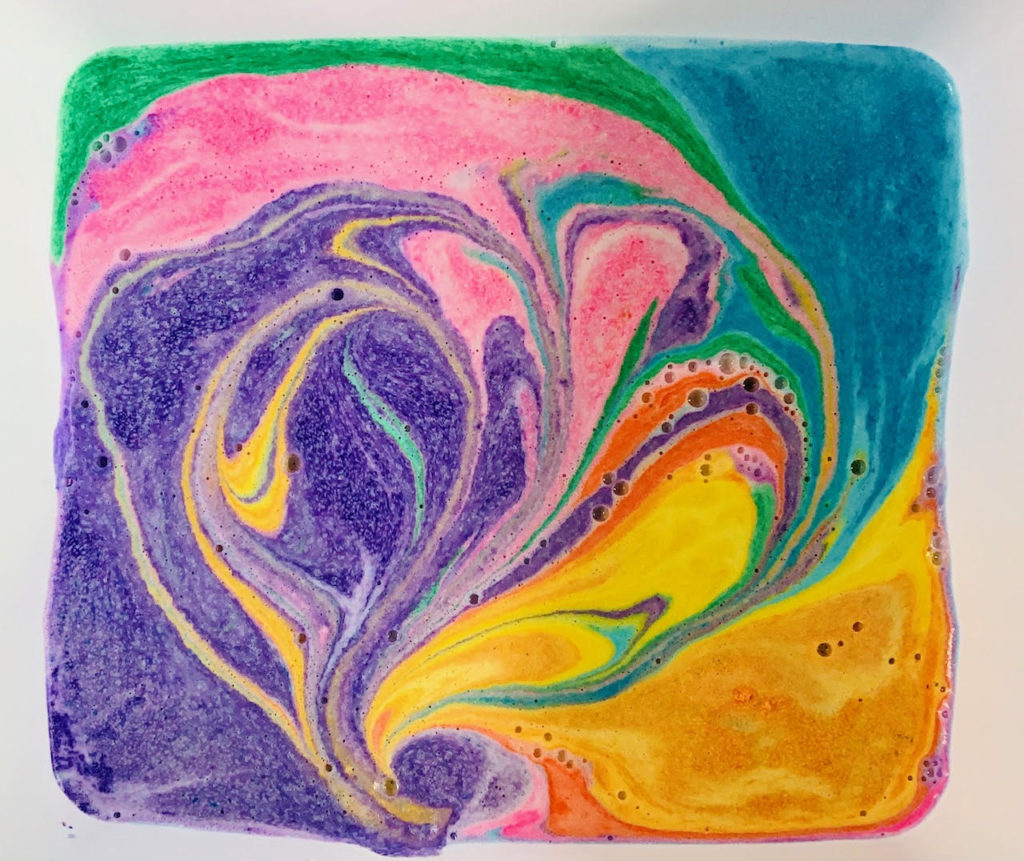
Happy Color Mixing!
-Robyn
About Robyn French Smith
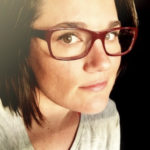
My name is Robyn French Smith! I studied fine art at the University of St Thomas and the Glassell School of Art in Houston TX, and graphic design at The Art Institute of Houston. I started dabbling in DIY bath and body products over 10 years ago after moving to Alaska. While I knew how to make basic soap for several years, I didn’t start looking at it as an art form until about 4 years ago when a neck and shoulder injury made it almost impossible for me to draw and paint. I needed a place for all that creativity to go, and I found it in soap. I received my Basic Soapmaker Certification from the HSCG in 2019 and plan on pursuing further levels of certification.
Find me online at scandaloussoap.com and Facebook!

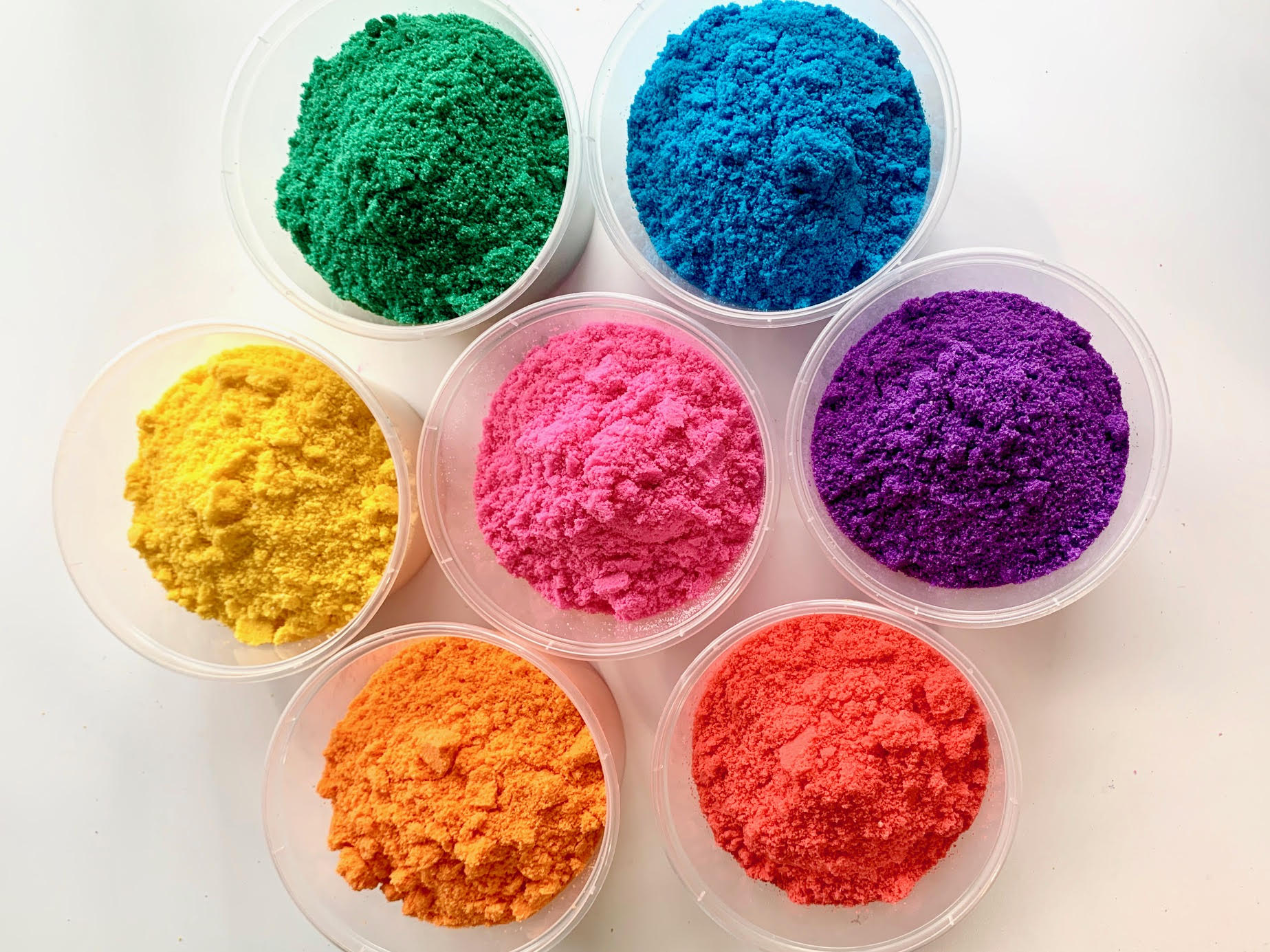
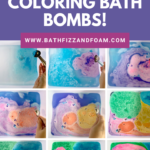
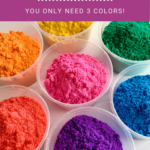
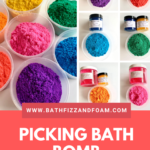
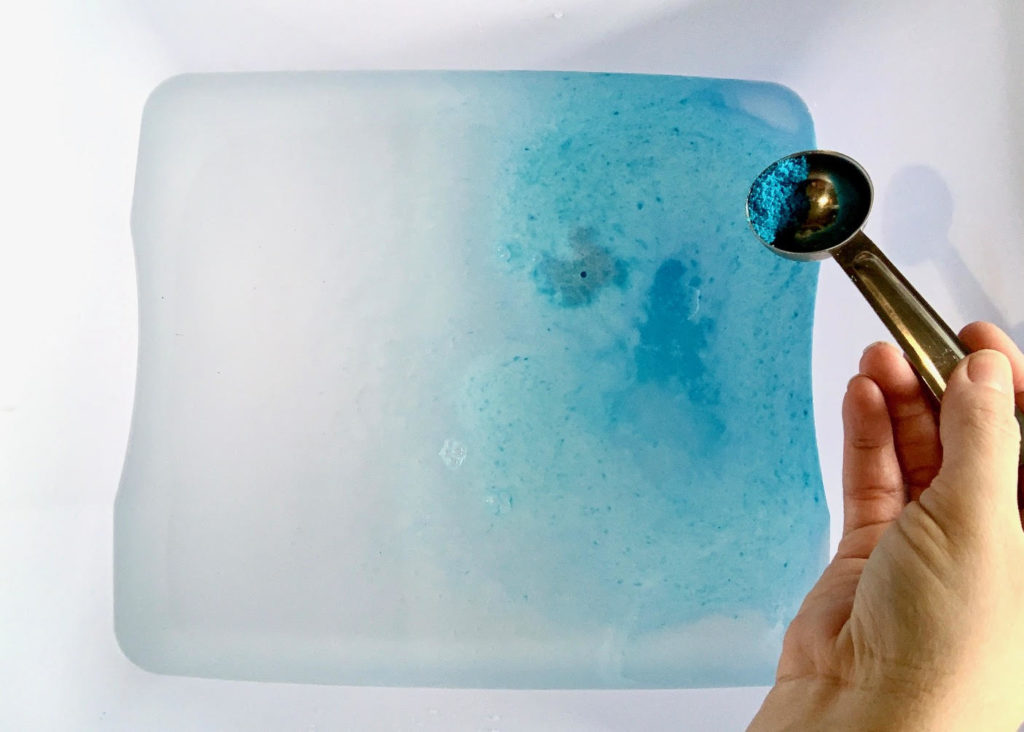
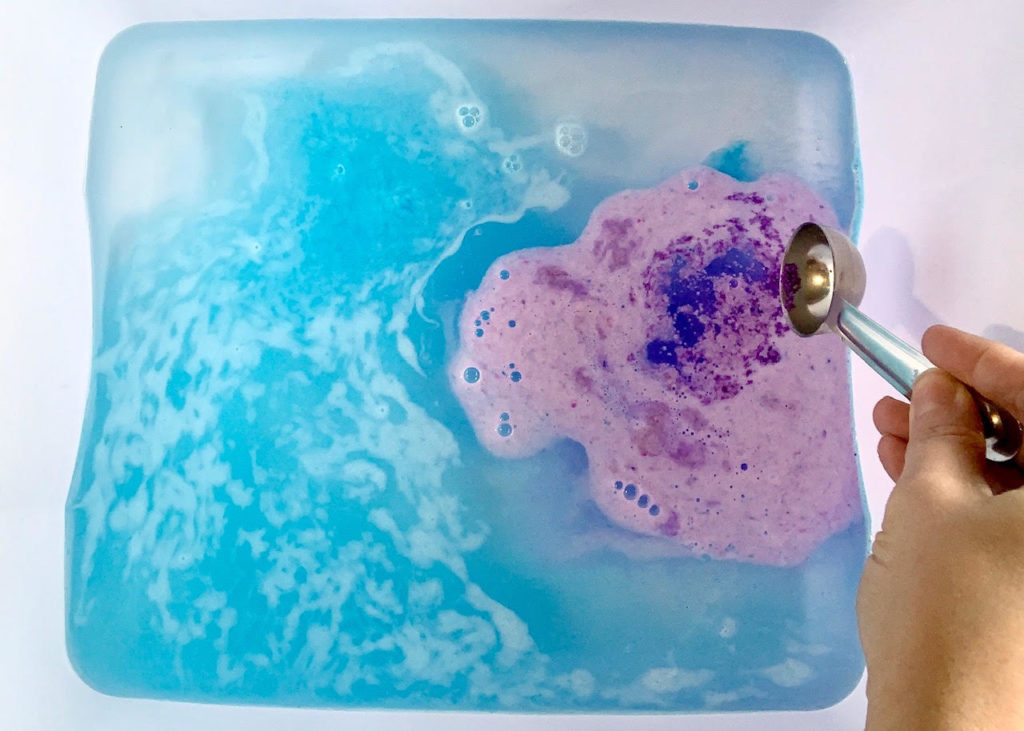
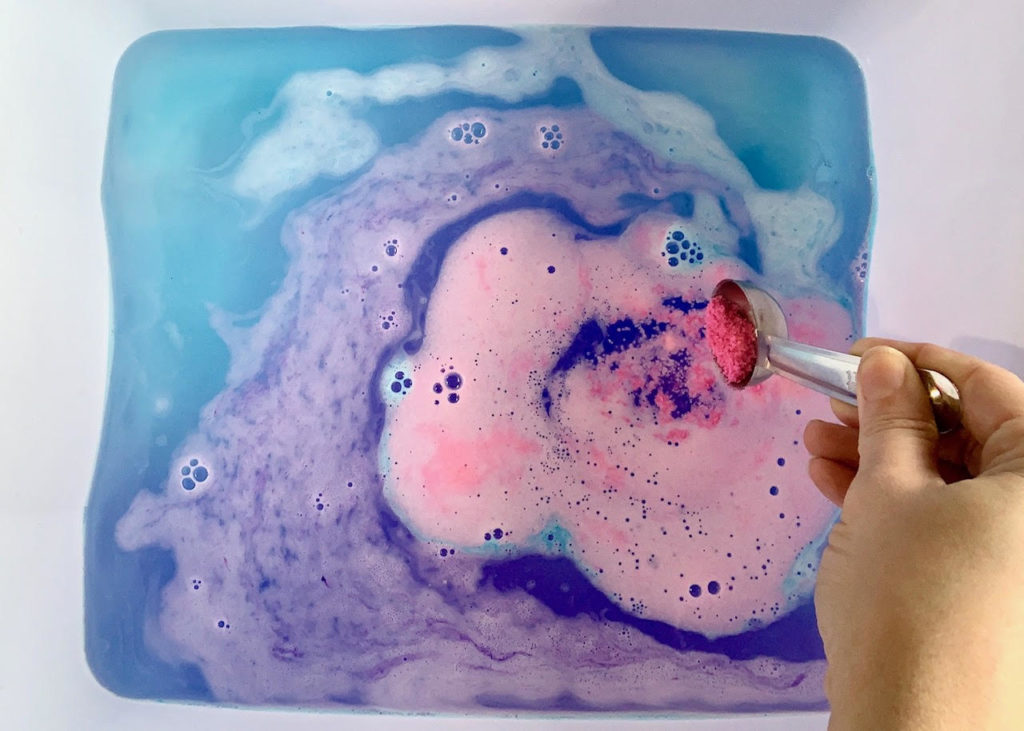
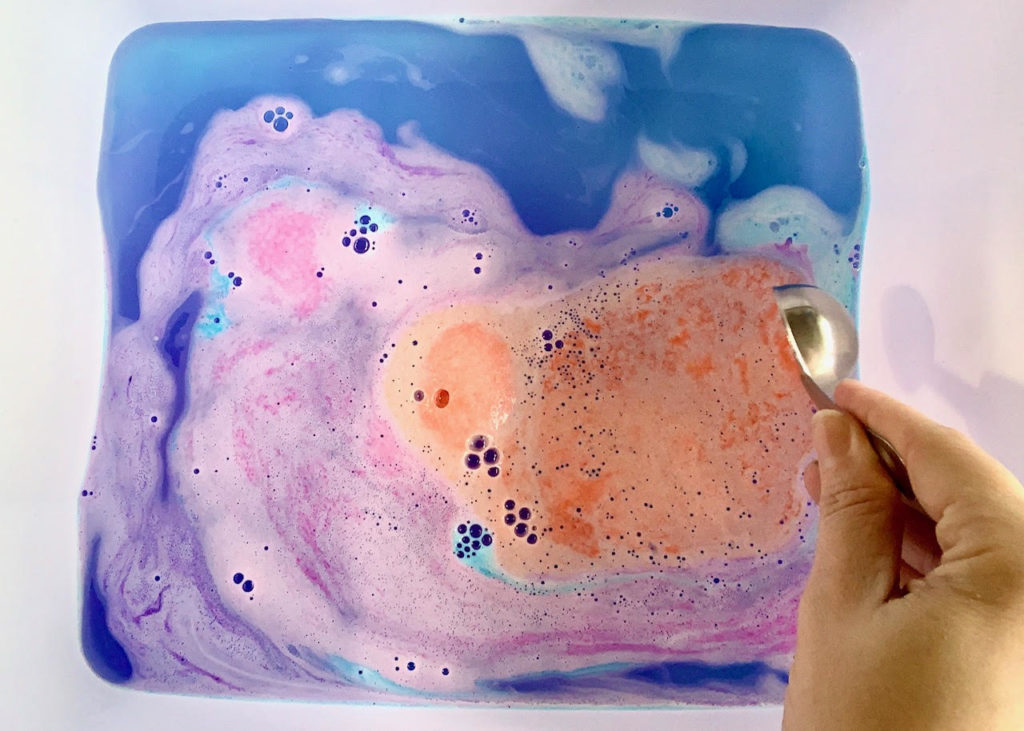
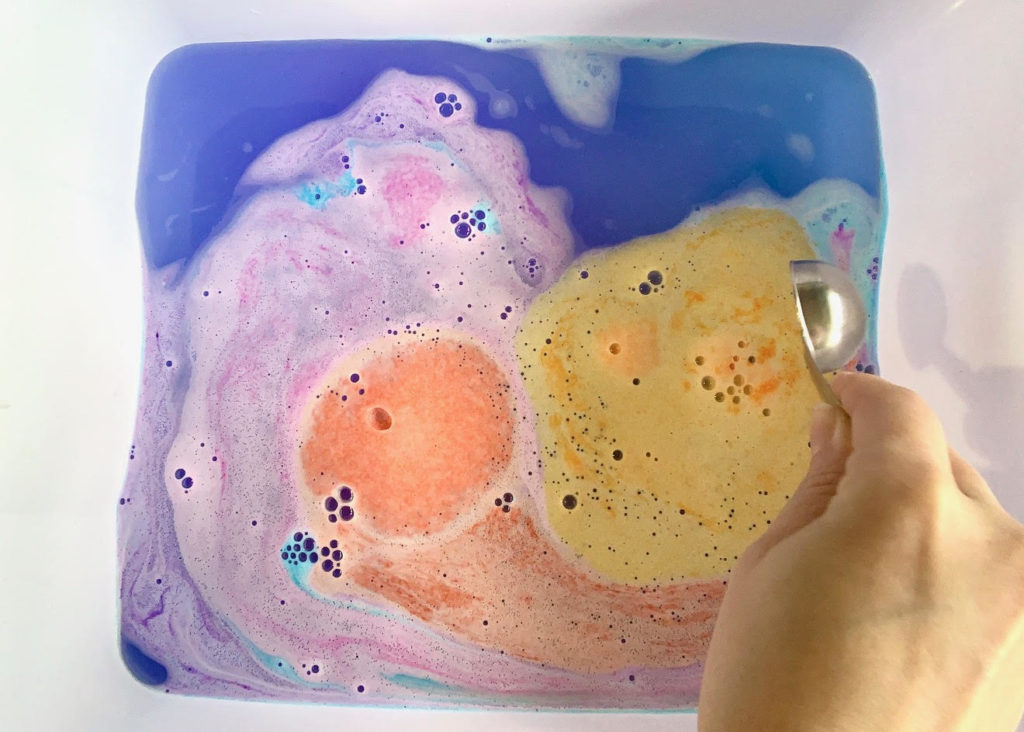
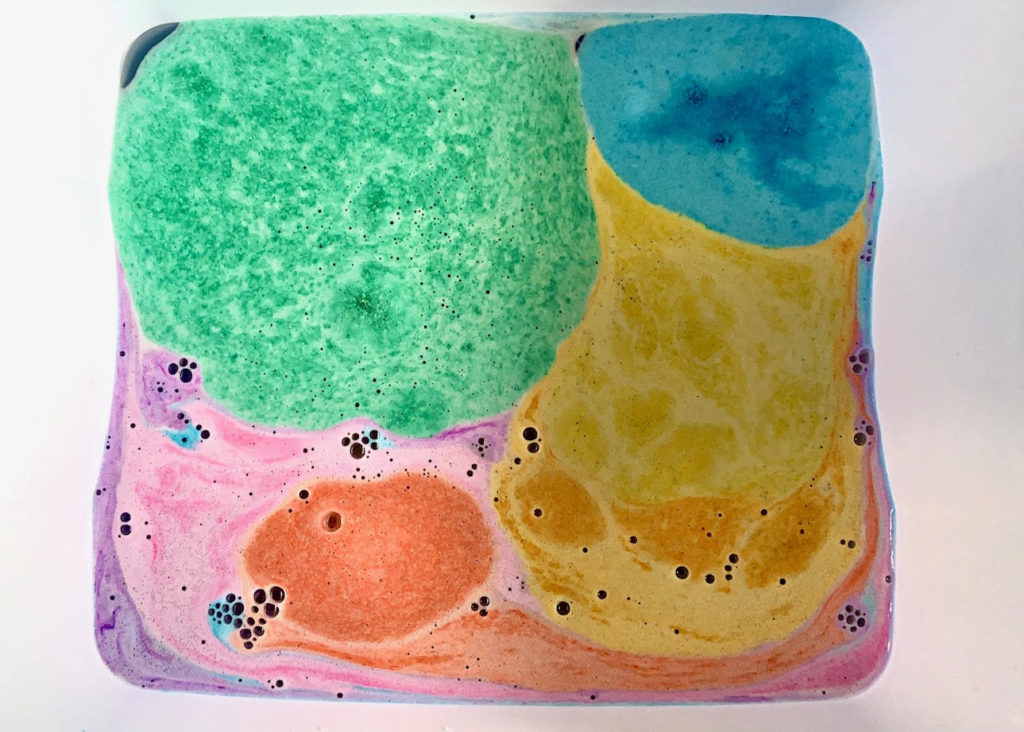
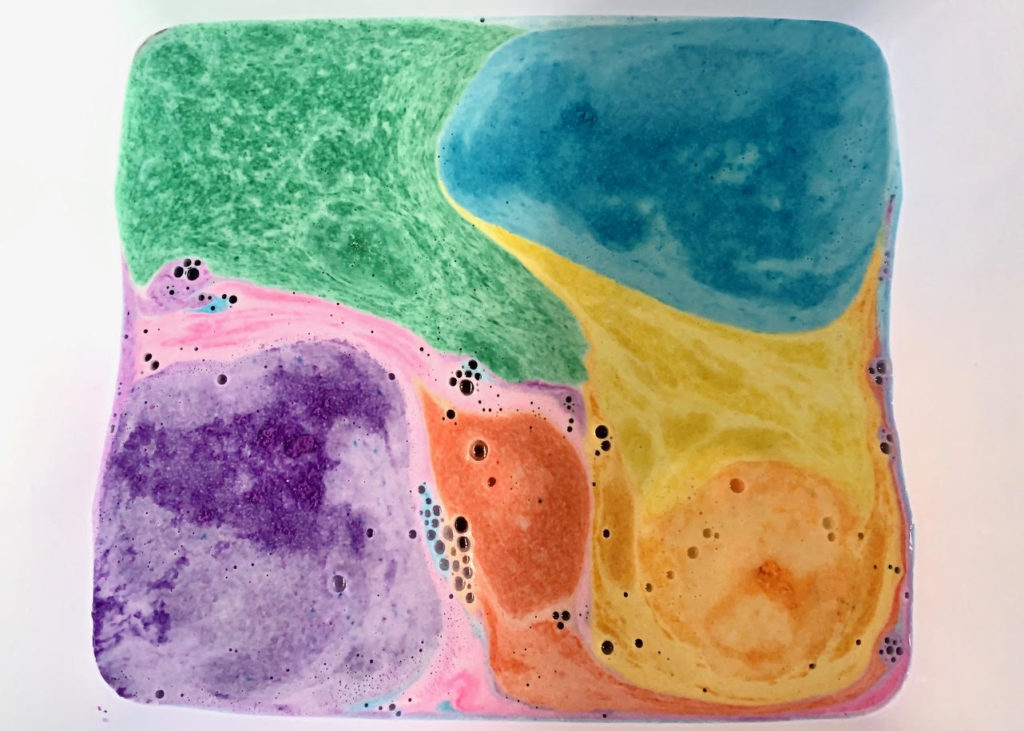
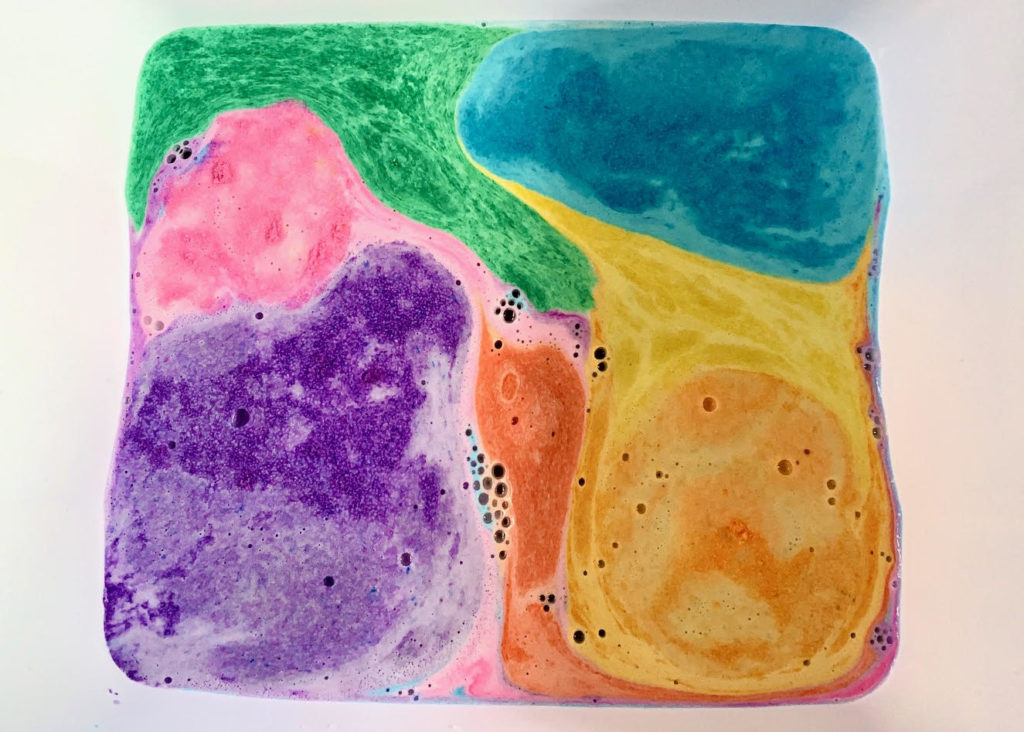
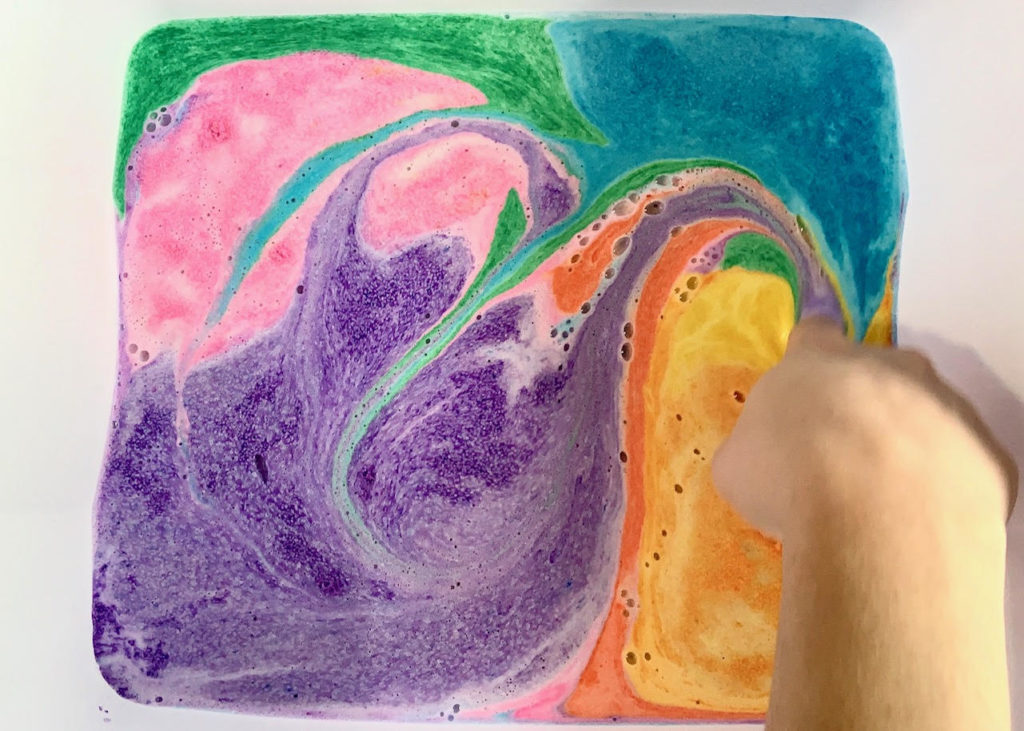
Hi there,
I would like to put the color powder to Pedicure Bath Tube for coloring.
Could you recommend items which is good for that.
FD&C Blue 1 Lake?
And How to buy it I cannot only powder.
I followed your instructions and I used water soluble powder (the ones suggested) once I put the liquid into the powder Its turned a muddy dull colour? What’s gone wrong please
If we don’t have coco betaine, is there a substitute? Also, if I can’t find coarse SLSa, can I just use fine?
Thank you so much! I’m learning!
Hi! I would like to get Red 27, where exactly can I buy it? I am in Spain…